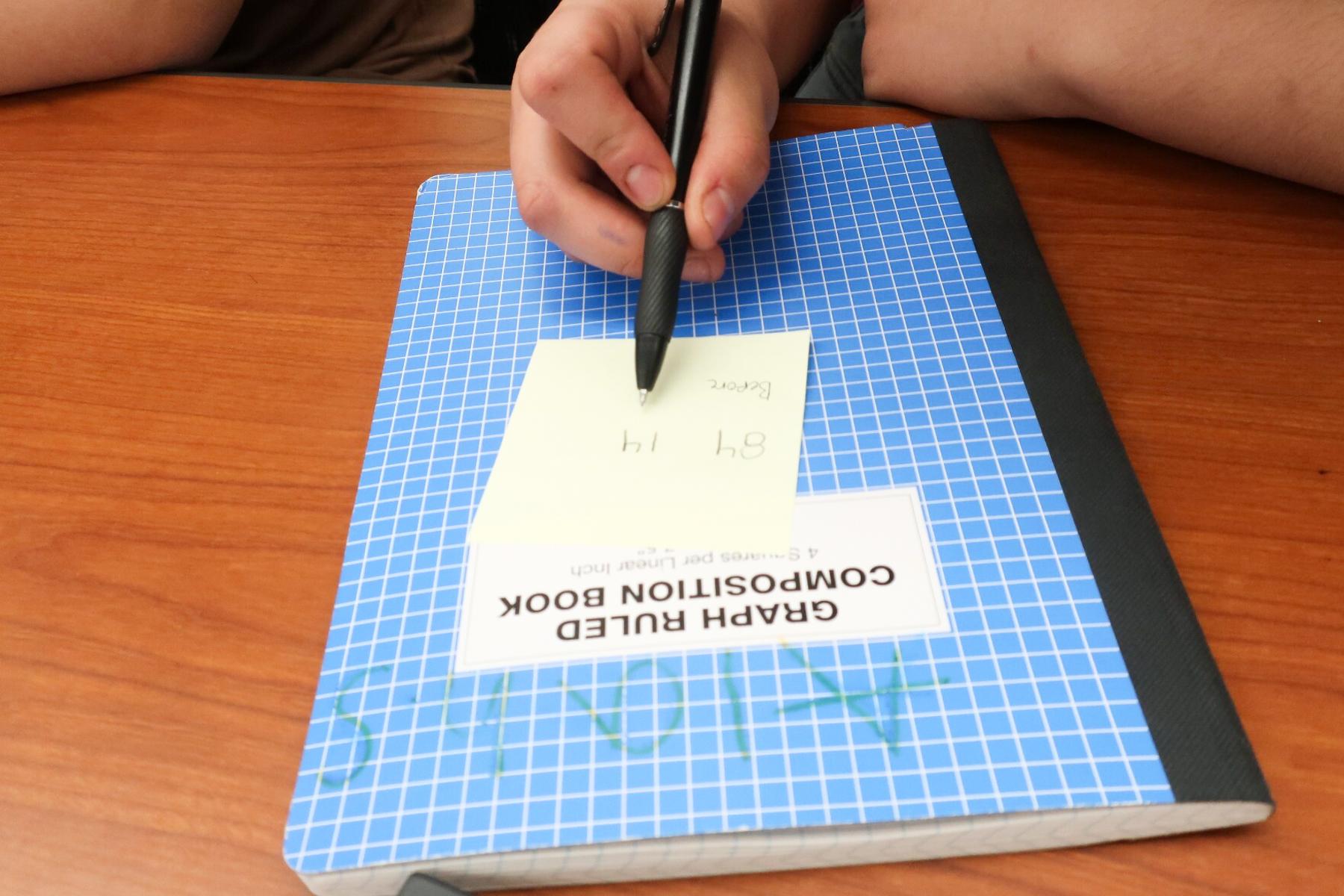
The damage the pandemic inflicted upon children was deep – and it will take a long time to dig out.
Standardized test scores, known as the Colorado Measures of Academic Success or CMAS, show some improvements over last year but learning deficits continue. Many students still aren’t at the academic levels they were before the pandemic, according to newly released results. Most of the data across grades was a mixed bag.
Though officials said last school year had far fewer disruptions, schools had more unfilled positions, and some students and educators are still experiencing social and personal challenges.
It’s the second year since the pandemic that Colorado students took a normal set of standardized tests. Tests were canceled in 2020 and modified in 2021. Third- through eighth-graders took the tests in English and math, while fifth-, eighth- and 11th-graders took the science tests.
“At the state level, we are beginning to see small increases in performance, which gives me optimism,” said Susana Córdova, Colorado Education Commissioner. “It’s a reflection of how hard people are working as well as how difficult it will be to regain momentum given the impact of the pandemic and the disruptions to learning it created.”
Córdova said educators, parents and students’ dedication in recovering academic skills lost during the pandemic is “nothing short of inspiring.”
“At the same time, we can see where things are working and areas where we need to increase our focus and support. Unfortunately, large gaps remain between student groups, which reaffirms my commitment to continue the hard work of eradicating the long-standing disparities in opportunity and achievement.”
Here are the big takeaways from the test results.
Students are rebounding more in math than in English
Overall, English scores bumped up very slightly over last year, with almost 43 percent of children reading and writing on grade level. But it still hasn’t reached the pre-pandemic level of nearly 46 percent. About half the grades dropped in scores from last year and about half increased.
In math, all grades improved over last year. Officials describe it as a “stair step” improvement since the pandemic ended. There were 32.9 percent meeting or exceeding expectations — a 1.4 percentage point jump over last year. It’s still shy of the pre-pandemic 34.7 percent at or above grade level. Third- through fifth-graders almost matched or performed better than 2019, the last test before the pandemic.
Some of that’s due to the fact that there was a more significant drop in math during the pandemic, so there’s more room to grow, according to Joyce Zurkowski, the Colorado Department of Education’s chief assessment officer.
“Our schools and districts exerted a lot of effort to remediate those lost learning opportunities.”
She said disparate impacts in different grades can be due to the age of a child during the pandemic.
However, girls aren’t recovering as fast academically
Boys gained ground on girls in almost every grade in reading and writing and math. Girls still are scoring higher in reading and writing in every grade level and gaps with boys remain — from 6 points in third grade to 13 points in grade eight. But the gaps tightened in 2023 due to better performance by boys.
In math, a subject in which boys historically perform better, gaps widened because the boys tested better. Girls in third through fifth grades fell in performance this year compared to pre-pandemic while boys in those grades increased.
“It's very good news that we're seeing the rebound for boys, but we need to have a better understanding of what's happening with girls in the state,” said Córdova. She noted national research showing that girls struggled more during the pandemic with anxiety and depression, but said why girls slowed down academically isn’t understood yet.
We finally know how some students are doing with new science standards
The state adopted new science standards in 2020. Only three grades take the test. About one in three students is where they should be in grades five and eight, but science knowledge drops by 11th grade, where one in four is on target. But — and this is a big but — fewer than half of 11th graders took the science tests. That means generalized results for the whole grade are hard to pin down. In science, boys perform more strongly than girls in fifth grade but the gap almost disappears by eighth grade.
Pervasive achievement gaps between races and income levels remain
For decades, the state has seen significant achievement gaps between students based on race and ethnicity, disability, family income levels and English-speaking ability. Gaps range from 20 to 46 points.
Asian students outperformed white students on 11 of the 12 tests. The white/Black achievement gap ran between 24 and 31 points depending on the subject. The white/Hispanic gap was nearly identical. The gap between students who qualify for federal free and reduced-price lunch and their wealthier peers is higher – between 27 and 35 points.
“It's clear that we need to double down on addressing the historic gaps between different groups of students,” Córdova said.
More high school students are ready for college English, but not in math.
On the college-entrance exams known as SAT, students have surpassed where they were before the pandemic in reading and writing. Nearly 60 percent of students are on target. But math scores are still 3.8-points below where they were before the pandemic. Just 35 percent are college ready in math. Schools will switch to computer-based SAT tests next year.
Fewer students took the SAT
State officials don’t know for sure why fewer students took the SAT college entrance exam but the number has dropped from 92.6 percent in 2019 to 86.6 percent this year. It could be because Colorado’s public colleges are no longer required to have students submit SAT scores for admission.
Participation in the regular CMAS tests was similar to 2022, but still lower than 2019. Grade eight participation dipped below 80 percent.
Multilingual learners are struggling
Another way the state measures students is their academic “growth.” That’s different from a one-time test score. Growth shows how much progress individual students have made over a year compared to their "academic peers." It's good news that all historically disadvantaged groups of students are growing at pre-pandemic levels now, though they still need higher growth levels to close gaps. One exception is multilingual learners.
“That's probably a group of interest that we'll be keeping an eye on,” said Lisa Medler, the department’s executive director of accountability and continued improvement.
For example, students who took the reading and writing test in English saw a 9 percent drop in scores this year compared to 2019, students who took the Spanish version of the test saw a 26 percent drop.
District performances vary widely without a strong trend
There are outliers but test scores, as they have for decades, strongly correlate to the socioeconomic background of students.
Along the Front Range, reading and writing scores ran the gamut — from 14 percent of students on grade level in Adams 14 in Commerce City to a high of 62 percent in Douglas County. Other scores for reading and writing on grade level: Denver — 40 percent; Jefferson County – 51 percent; Cherry Creek — 50 percent; Aurora — 23 percent.
Math scores also ran the gamut among Front Range districts – from 9 percent of students on grade level in Adams 14 in Commerce City to a high of 51 percent in Littleton. Both those districts however, saw among the highest increases in math scores in the Denver metro area. Other scores for math on grade level: Denver – 30 percent; Jefferson County — 39 percent; Cherry Creek — 40 percent; Aurora — 15 percent.
What does this all mean?
State officials say scores provide a roadmap for schools and districts on where to focus. The state will continue supporting all of Colorado teachers who were required to take training in evidence-based reading instruction. This year all K-3 administrators and principals must take the training. The legislature provided a big investment for a grant program for free academic enrichment in math, especially for students who are below grade level. Educators in core content areas who must have their license renewed by 2025 or later must take 45 hours of training for English language learners.
The state will keep distributing the $6.7 million allotted in federal money for high impact tutoring, after-school programming and high-quality math curriculum, Córdova said.
It provides a road map for schools to design a roadmap for improvement, how the department directs resources to different schools, and it gives direction at the state level.
School districts will send families their students individual reports soon.









